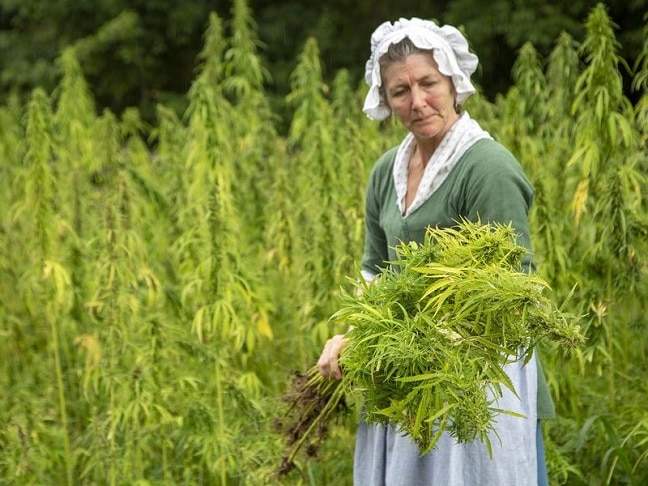The first crop of industrial hemp grown in centuries was recently harvested at Mount Vernon.
Starting in the 1990s, people would occasionally get change only to find a dollar bill that had been stamped with a speech bubble making George Washington say “I Grew Hemp.” It was one of the first salvos in the movement to legalize industrial hemp, the cousin of marijuana that was used for centuries to produce rope, paper, oil and cloth. While the stamping movement was of questionable legality, it wasn’t wrong. George Washington did indeed grow hemp, and Brakkton Booker at NPR reports that the crop is once again growing at Washington’s home in Mount Vernon for the first time in centuries.
According to the Associated Press, horticulturalists at Mount Vernon planted the crop in May to highlight the first American president’s connection to agriculture. This week employees harvested the hemp and began processing it into fibers that could be used to make rope or cloth.
Dean Norton, director of horticulture on the estate, says Washington refers to hemp 90 times in his diaries. In the 1760s, when the price of tobacco plummeted, he considered diversifying his farm and looked into hemp growing. While he ultimately decided to focus on wheat, he did grow hemp for domestic use, possibly using the fibers to clothe his slaves or to make fishing nets for use on the nearby Potomac River.
The idea of bringing hemp back to Mount Vernon was hatched by Brian Walden, a farmer in Charlottesville, Virginia, and the central Virginia regional coordinator for the Virginia Industrial Hemp Coalition. By bringing the crop to Mount Vernon, the self-identified “hemp patriot” hopes to show that it’s a useful crop, not just an artful cover for the marijuana industry.
Hemp and marijuana are technically the same species of plant, Cannabis sativa, however, the varieties known as hemp have very low levels of THC, the psychoactive substance in marijuana. Hemp is usually tall and narrow to maximize the length of the fibers found in the stem, versus its shorter, bushier, groovier cousin. Since the 1970s, all Cannabis, including marijuana and hemp, has been considered a federal Schedule I drugs and growing it has been prohibited.
But the 2014 Farm Bill allowed states to authorize hemp research programs leading some states to allow limited hemp farming. The 2018 Farm Bill, passed by the Senate, includes full legalization of hemp farming, though it’s not clear if those provisions will pass in the House of Representatives.
“I think where we’re at right now, is a situation in which finally a lot of members of Congress … have finally stopped buying drug war-era rhetoric, stopped thinking about the cannabis plant in a very uniform way,” John Hudak senior fellow at the Brookings Institution and author of “Marijuana: A Short History” tells NPR.
In Virginia, state universities run a program that regulates hemp cultivation, which gave Mount Vernon permission for the planting. The experience is giving interpreters at the estate a little more insight into Washington’s world. And, though hemp grows like a weed, getting it started was harder than anticipated. “As soon as we planted it, we had those monsoons come through and wash away a lot of the seed. We had to re-sow,” Norton tells the AP. “I learned more about hemp than I ever thought I would. It’s an amazing crop.”
Washington was not the only Founding Father that was fond of hemp. John Adams, Thomas Jefferson and many other gentleman farmers involved in early U.S. history cultivated hemp, though there is no documentary evidence that they ever tried to smoke it.














